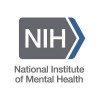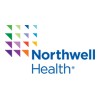
Brain Imaging of Childhood Onset Psychiatric Disorders, Endocrine Disorders and Healthy Volunteers...
Attention Deficit Hyperactivity DisorderSchizophrenia1 moreMagnetic Resonance Imaging (MRI) unlike X-rays and CT-scans does not use radiation to create a picture. MRI use as the name implies, magnetism to create pictures with excellent anatomical resolution. Functional MRIs are diagnostic tests that allow doctors to not only view anatomy, but physiology and function. It is for these reasons that MRIs are excellent methods for studying the brain. In this study, researchers will use MRI to assess brain anatomy and function in X and Y chromosome variation, healthy volunteers, and patients with a variety of childhood onset psychiatric disorders. The disorders include attention deficit disorder, autism, congenital adrenal hyperplasia, childhood-onset schizophrenia, dyslexia, obsessive compulsive disorder, Sydenham's chorea, and Tourette's syndrome. Results of the MRIs showing the anatomy of the brain and brain function will be compared across age, sex (gender), and diagnostic groups. Correlations between brain and behavioral measures will be examined for normal and clinical populations.

PhaRmacOgenetics and Therapeutic Drug Monitoring In SchizophrEnia
Patients With SchizophreniaSchizophrenia is a severe chronic mental disorder with a long-term treatment. Most antipsychotic (AP) drugs are effective for only 30% to 60% of patients and for many drugs, treatment selection remains a "trial-and-error" process.The main result of treatment inefficiency is relapse, the recurrence of acute symptoms after a period of partial or complete remission. Pharmacogenetics (PG) is the study of genetic differences in drug met-abolic pathways which can affect individual responses to drugs, both in terms of therapeutic effect as well as adverse effects. PG testing could therefore identify patients at potentially high risk of relapse allowing the opportunity of an individualized prescription. In this study, PG was shown to improve the safety profile of AP treatments in patients presenting PM or UM CYP variants, by reducing associated side effects. Therapeutic Drug Monitoring (TDM) is the quantification and interpretation of drug concentration in blood to optimize pharmacotherapy . For drugs with established therapeutic reference ranges (TRR) or with a narrow therapeutic index, it makes sense to measure drug concentrations in blood for dose titration after initial prescription or after dose change. Non adherence is a recurrent problem in the management of schizophrenia, leading to reduced quality of life and increased risk of relapse. TDM is recognized as a direct reliable measure for drug adherence and can be an additional support after a therapy adjustment. Additionally, TDM can be useful to educate patients and make them more aware of their treatment. Finally, TDM is likely to ensure a better tolerance and fewer side effects for APs, while allowing a better efficacy. However, evidence on the clinical impact of this tool in schizophrenic population is lacking and randomized clinical trials are needed to confirm it. Finally, relapses occur frequently in schizophrenia and the cost for a relapsing schizophrenic patient is estimate over 4 times higher than for a non-relapsing patient, highlighting the importance of cost-effective care strategies. When separately used PG testing or TDM alone, might not be sufficient to ensure the clinical utility and cost-effectiveness of these tests. We hypothesize that individualized medicine including the association of PG testing with TDM (PG/TDM intervention), on the most commonly prescribed AP drugs, can reduce relapse rate at one year while being cost-effective.

iTBS for Increased Appetite Induced by Antipsychotics
SchizophreniaAntipsychotics are prone to cause metabolic side effects, including weight gain, hyperglycemia, insulin resistance, hyperlipidemia and so on, leading to a 2-3 times higher risk of death in patients with schizophrenia compared to healthy people. Conventional high-frequency rTMS have been used to treat people with obesity and showed certain effectiveness. However, studies involving schizophrenia patients and intermittent theta burst (iTBS) mode are rarely seen. The goal of this clinical trial is to evaluate the efficacy and safety of iTBS on ameliorating increased appetite induced by antipsychotics in people with schizophrenia.

Low-dose Buprenorphine as a Modulator of Social Motivation in Schizophrenia
SchizophreniaLow social motivation is a significant symptom of schizophrenia and is a major cause of disability and suffering for many patients struggling with the illness. Social motivation refers to the drive to participate in or abstain from social activities. Many patients with schizophrenia evidence both decreased drive to seek positive social input (approach motivation) and heightened drive to avoid negative social input (avoidance motivation) compared to individuals without the illness. Despite the enormous burden of these deficits on patients, there are no medications that effectively treat impaired social motivation. Buprenorphine is an unusual drug that is used to treat opioid use disorder at higher doses and more recently, to treat depression and suicidality at lower doses. It is a unique opioid medication that has a compound action that gives it the potential to improve social motivation both by boosting approach motivation and by reducing avoidance motivation. The effects of low doses of buprenorphine have previously. been studied in healthy volunteers, showing that the drug enhances social motivation. These results in nonclinical volunteers suggest that buprenorphine may be a promising treatment for deficits in social motivation seen in some patients with schizophrenia. However, no previous studies have investigated the effects of buprenorphine on social motivation in this population. Here the effects of a low dose of buprenorphine (0.15mg) on social motivation in patients with schizophrenia (N=40) will be assessed. In this double-blind, cross-over, placebo-controlled study, participants will attend a 2-hour preparatory session and two 6-hour laboratory sessions, at which they will receive either placebo or buprenorphine. During expected peak drug effect they will complete validated tasks assessing social motivation. It is expected that buprenorphine will increase approach motivation and decrease avoidance motivation as measured by an attention bias task. The results of this study will lay the foundation for the clinical use of buprenorphine as the first medication to treat social deficits in schizophrenia.

The Effect of a Six Week Intensified Pharmacological Treatment for Schizophrenia Compared to Treatment...
Schizophrenia and Related DisordersEarly Treatment-ResistanceSchizophrenia (SZ) affects approximately 4.5 million people across the European Union (EU) and is associated with annual healthcare and societal costs of 29 billion Euros. The impact on the daily life of patients is huge, ranging from frequent relapses and hospitalisations, the inability to maintain a job or continue scholing, to a low quality of life, impaired cognitive functioning, suicidal ideation and an increase morbidity rate, next to the large burden for carers 1. When diagnosed with schizophrenia or related disorder, patients are commonly prescribed antipsychotics. One-third of the schizophrenia patients are regarded treatment-resistant (TR), meaning that at least two antipsychotic trials have failed. Typically, clozapine is prescribed for TR patients, which is effective for approximately 40% of patients. Clozapine is among the most effective treatments, with the lowest all-cause mortality. Although it is among the most effective antipsychotics, it is generally not used earlier in the illness course due to a small risk of severe neutropenia/agranulocytosis, which is why patients treated with clozapine are intensely monitored. However, this small risk outweighs the burden of not receiving an effective treatment. Since clozapine is among the most effective treatments, this leads to the research question whether earlier initiation of third-line treatment ('early intensified' pharmacological treatment; EIPT) would be more beneficial than the current second-line treatments (treatment as usual; TAU). If this is indeed the case, this could lead to the prevention of unnecessary trials of ineffective treatments, hospitalisations, and recommendations for adaptations of worldwide guidelines as well as a reduction of healthcare and societal costs The INTENSIFY-Schizophrenia trial is part of the larger Horizon 2021 project Psych-STRATA, with the central goal of paving the way for a shift towards a treatment decision-making process tailored for the individual at risk for treatment resistance. To that end, the inestigators aim to establish evidence-based criteria to make decisions of early intense treatment in individuals at risk for treatment resistance across the major psychiatric disorders of schizophrenia, bipolar disorder and major depression. The current protocol focuses on the sample of schizophrenia patients.

Safety, Tolerability, Pharmacokinetics and Efficacy Study of HS-10380 in Patients With Schizophrenia...
SchizophreniaThe objective of this study is to evaluate the safety, tolerability, pharmacokinetics and efficacy of HS-10380 relative to placebo for the treatment of participants with schizophrenia.

Horyzons: Implementation and Integration in Clinical Practice
SchizophreniaSchizophreniform Disorders2 moreThe primary aim of this trial is evaluating the barriers and enablers of implementing a digital intervention with both therapeutic content and social networking, Horyzons, as part of clinical care in first episode psychosis (FEP) clinics in North Carolina. Providers (clinicians and peers support specialists) will be recruited from FEP clinics to assess Horyzons implementation and integration within clinical care at three time points (baseline, 6 months, and 12 months). Further, individuals experiencing FEP between the ages of 16 and 35 receiving services from the FEP clinics will be recruited to engage with the platform over the course of 12 months. Due to the nature of the digital intervention being implemented across the state of North Carolina, all research visits will be conducted remotely via videoconferencing.

Using Digital Media Advertising to Reduce the Duration of Untreated Psychosis
SchizophreniaFirst Episode PsychosisThere is compelling evidence that longer duration of untreated psychosis independently predicts negative outcomes. The proposal aims to explore whether targeted and proactive online outreach through search engine advertisements, coupled with engaging, informative, and interactive online resources, can effectively reduce the duration of untreated psychosis and facilitate earlier treatment initiation in New York State. Results from this initiative will be critical to informing the subsequent design and conduct of larger, focused, and proactive digital media campaigns targeting patient with FEP and their caregivers online, intended to accelerate linkage to care and reduce the duration of untreated psychosis throughout the U.S.

Non-Pharmacological Treatment of Psychosis
Psychosis; Schizophrenia-LikeThe objectives of the project are to investigate feasibility, safety, and health-related outcomes in patients with psychosis who choose not to use antipsychotic drugs (APs). The instruction from the Ministry of Health and Care Services to establish "Medication Free" (non-pharmacological (NonPharm)) treatment services, which has received substantial critique for being given without support in scientific evidence, provides a window of opportunity for research in an under-investigated field. The study will prospectively follow a cohort over 1 year who seeks NonPharm treatment, with repeated measurements of symptoms, functional outcomes, quality of life, adverse events, as well as biological parameters including genetics and brain imaging, and environmental factors, and compare the findings to a control group of users of antipsychotic drugs, matched for age, gender and diagnosis. Current unanswered questions in the treatment of psychosis include which patients can successfully and safely discontinue antipsychotic medication; and what are the long-term symptomatic, biological and functional outcomes after use or non-use of APs, respectively. Taken together there is a fundamental lack of high-quality evidence to guide the treatment options in people who cannot or do not want to use APs in psychosis. This is also a major challenge in the study, as a more rigorous design that could directly compare different treatment options is not feasible, because no alternatives to APs have proven to be sufficiently effective and safe in controlled trials. The study is accordingly expected to provide new exploratory information that could be the basis of intervention studies which in its turn could provide important information for consumers and the mental health services regarding treatment options in psychosis.

Risk Prediction Model of Cardiovascular Events in Patients With Schizophrenia
SchizophreniaSchizophrenia is a serious mental illness that has a great impact on social function. Studies have evidenced that schizophrenia patients live 10-20 years less than general population.It mainly dues to high cardiovascular risk. How to improve patients' survival rates? At present, there is an objective model to assess cardiovascular risk among schizoprenia patients in England - PRIMROSE.But there is a lack of model for schizophrenia patients in china. In order to better guide clinical practice, we are now exploring a domestic cardiovascular risk prediction model to raise people's awareness.
